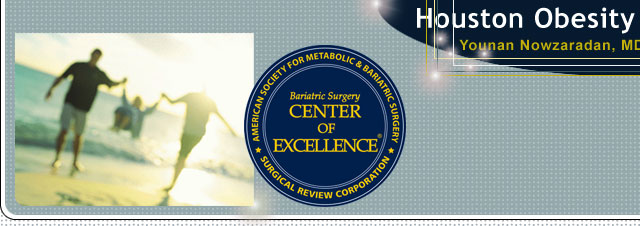
| Obesity Statistics in the Elderly Obesity is a common problem in the elderly, although its prevalence decreases in extreme old age. The health implications, medical management, and goals of treatment of obese elderly people are much different than with younger patients. Patterns of weight gain and distribution of fat change throughout life and have important implications for management. About 44% of people lose weight in the later half of life, while 19% gain weight. There also are significant racial differences in weight maintenance, with whites tending to continue gaining weight and blacks often losing weight in later years. Specifcs Contributors of Obesity in the Elderly Weight gain in older age is as serious as it is in younger people, even if weight remains stable during the first half of life. The unhealthiest pattern is continuously gaining weight throughout life, which results in a risk for type 2 diabetes. In general, the percentage of body fat peaks in the sixth decade of life. Studies with whole-body Magnetic Resonance Imaging (MRI) show that overall adiposity (percentage of body fat) increases with age and shifts within body spaces. While subcutaneous adipose (fat distributed just below the skin) decreases over the years, visceral and intramuscular adipose increases. Unique Effects of Obesity for the Elderly There are a few benefits to overweight among the elderly. By stressing the skeleton, excess weight reduces the loss of bone mass, and overweight elderly people are less likely to suffer hip fractures, a major cause of morbidity and mortality. However, experts agree that the health risks of overweight and obesity are greater than any advantages. Obese elderly people are more likely to become disabled and to be admitted to a nursing home. Obesity is a major predictor for loss of independence and exacerbates age-related decline in physical functioning. |
Unique Weight Reduction Goals In the past, bariatric surgery was generally not recommended for people 65 years of age and older, although it was deemed appropriate in some more severe cases. Recent studies; however, suggest that bariatric surgery, in obese patients above age 60 can be safely performed even in patients above age 70 and with the same benefits as for younger subjects. Typically, elderly patients will to lose less weight than younger patients, and they are prone to increased complications. Most malabsorptive types of weight loss surgery, such as Roux-en Y, are not recommended for the elderly because the decrease in nutrient transfer and absorption associated with this type of surgery can contribute to osteoporosis and many other ailments associated with malnutrition. When considering bariatric surgery in obese elderly patients, the risks and benefits must be weighed carefully and with heightened case individuality. Options to Surgery Chronic inflammation and endocrine changes contribute to the changes in metabolism and body composition that accompany ageing, and are potential therapeutic targets. Body weight and body mass index are imperfect indicators of risk from obesity for the elderly, simply because BMI measurements rely on a standard fat distribution throughout the body. For the elderly, the focus of treatment should be on reduction of intra-abdominal fat and preservation of muscle mass and strength. Reduced function and decreased quality of life accompany development of the complications of obesity such as diabetes and vascular disorders. There is considerable scope to impede the development of these complications in the elderly with lifestyle interventions. The relative controversy over the appropriateness of bariatric surgery as a method of weight control for the elderly would suggest that an individual would be best served by addressing his or her obesity issues before reaching their senior years. As is common with all surgical cases, and with weight loss surgery in particular, the needs of the individual must be carefully considered. Even if you have been dismissed by other medical professionals, Dr. Nowzaradan welcomes your inquiries. |

